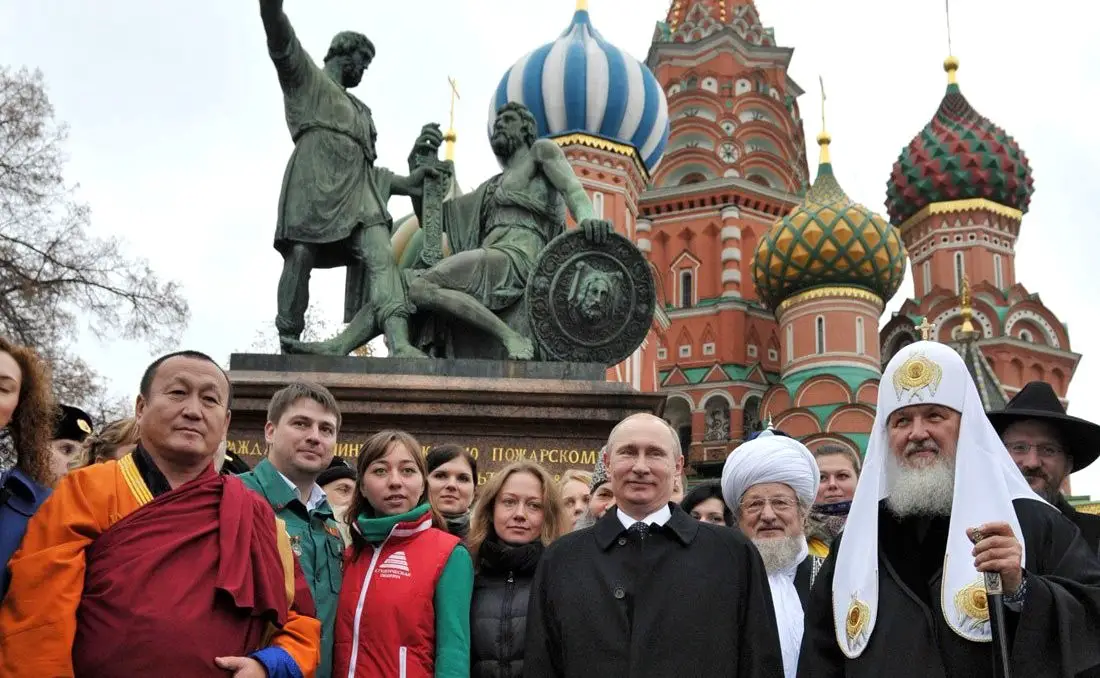The following resource is meant to quickly but thoroughly overview the subject of religion in Russia. It includes statistics on membership, information on major organizations and institutions, and links to sites offering histories. Mention of religion in other FSU countries is made as well. Your suggestions and comments are always welcome! Contact the Author
Table of Contents
- General News and Information
- Orthodoxy
- Islam
- Staroveri (Old Believers)
- Buddhism
- Protestants and Catholics
- Judaism
- Shamanism/Paganism/Traditional Belief
- Atheism/Agnosticism
- Interreligious Organizations and Religious Tolerance
Color Code: Red links are to sites only in Russian.
Light-blue links have English available.
1. General News and Information
World Wide Religious News is a free news monitoring service with search functions by geographic region and faith. Subscription service available.
Forum18 provides news on issues of religious freedom in Russia and the CIS.
Religare.ru is a project partly sponsored by the Federal Agency for the Press and Mass Communications. It is meant to educate Russian journalists about religious subjects.
Stetson University also offers a regularly updated and useful news monitoring service.
Adherents.com offers an interesting collection of statistics related to religion and ethnicity.
Yandex News offers religious news in Russian.
Nezavisimaya Gazeta also offers a news page devoted to religion.
Most Russian newspapers also offer some religious news within their society or culture sections.
2. Russian Orthodox Church
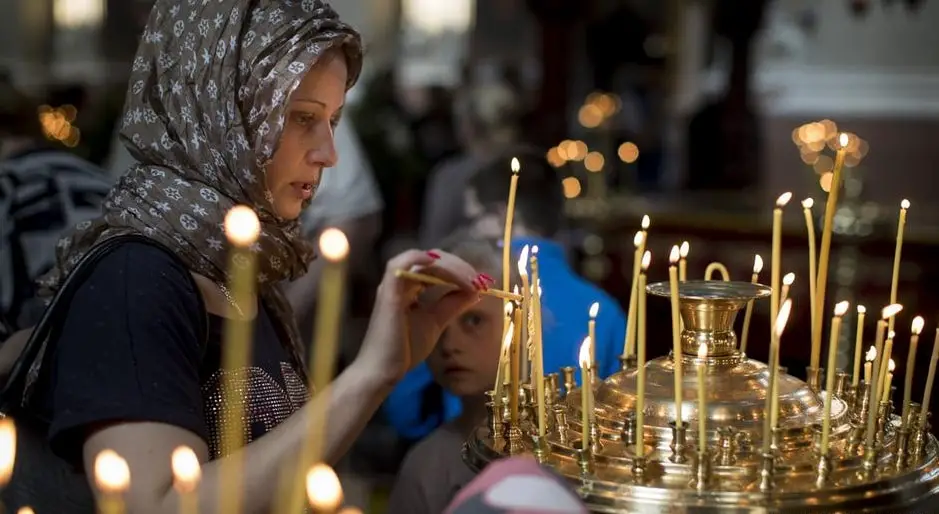
The Russian Orthodox Church is the largest in Russia. Estimates of adherents in Russia range from 60 million (some 42% of the population), to over 100 million (71%). The numbers largely differ based on the question asked in the polling. If asked what religion they identify with, a majority of Russians will say Russian Orthodox. If asked what church they regularly attend, “none” is a very common answer. Many Russians, although they may never attend church services, consider themselves Russian Orthodox simply because they are Russian. The Russian Orthodox Church is part of a wider Orthodox tradition that encompasses a range of Orthodox churches, many of the largest of which will work together on various issues. The worldwide population of Orthodox believers is believed to be around 260 million, with Russian Orthodox being by far the most populous of that group.
a. History, News, and Information
Wikipedia offers an extensive history of the church.
Azbuka.ru offers lots of information about Orthodox beliefs in handy schematics.
Orthodox Wiki is a wiki covering all elements of Orthodox Christianity. Wikipedia has also opened a new Wiki printed in Old Church Slavonic.
The Orthodox Church now has its own YouTube channel.
The Church Herald (Tserkovny Vestnik) is the main official publication of the Russian Orthodox Church. Information about the paper is available in English – the rest is Russian.
Ruskii Dom is a conservative publication published with the official support of the Patriarch. Its editor in chief is Duma Deputy Alexander Krutov, a former member of the nationalist Rodina party, which merged with other conservative parties to found the Fair Russia party.
Sedmitsa.ru is “The Orthodox Encyclopedia” and offers lots of documents, news, and analysis.
Portal-slovo.ru is an “Orthodox education project” focused on bringing the Orthodox worldview to students and scholars (who speak Russian).
b. Related Organizations and Institutions
The Moscow Patriarch heads the Russian Orthodox Church. The site offers extensive information on the structure, philosophy, and dogma of the church, including an extensive listing of Orthodox institutions outside Russia. The homepage is in English, but all others are in Russian.
Pravoslavie.ru is the orthodox informational portal launched upon the blessing of Alexis II (Patriarch of Moscow from 1990 to 2008). Currently edited by the Metropolitan of Pskov and Porkhov, Tikhon (Shevkunov).
The Department for Church Charity and Social Service of the Moscow Patriarchate (DCCSS MP) deals with organizing, co-ordinating and developing the social service of the Church in parishes, dioceses and the whole canonical territory of the Russian Orthodox Church.
The Cathedral of Christ the Savior was demolished by the Communists and grandly rebuilt after the fall of the USSR as a symbol of the official return of Orthodoxy to Russia. This official site has history, photos, and other information about the iconic church.
c. Icons
Icon painting is a sacred art within the Russian Orthodox Church. Only those trained and approved by the Church may produce icons to be displayed in churches for worship services.
Palekhskaya Icon Painting Workshop is one of the most active icon workshops with icon painters producing modern-day icons.
Ekaterina Icon Painting Workshop is another official producer. They offer online shopping for icons.
The Orthodox Church and its Icons offers lots more links, pics, and other information.
The Museum of Russian Icons, located in Massachussets has lots of information on its site as well as many icons on display. They are not connected to the Russian Orthodox Church.
d. Orthodoxy Outside the FSU
The Russian Orthodox Church Abroad has, due to the isolation Orthodoxy suffered under communism, operated as an independent entity and has generally evolved along a much more liberal path than the Orthodox Church in Russia. The two churches recently resolved to reunite, causing controversy particularly with the Russian Orthodox Church in England which has threatened to schism away from the church rather than adopt what it sees as oppressive religious practices.
St. George Broadcasting is an Orthodox news source covering much of Eastern Orthodoxy. The site includes various online radio broadcasts of Orthodox church services.
Texas A&M has an Orthodox Christian Fellowship.
The Russian Orthodox Church in America is headed by Mercurius, Bishop of Zaraisk, and based out of St. Nicholas Cathedral in New York.
Orthodoxy in America describes beliefs and practices and lists parishes across the country by tradition and location.
The Russian Orthodox Church in America has another site which offers liturgical music downloads and more.
St. John’s Orthodox Church in Rahway, NJ has an immense site with hundreds of links to Orthodox Organizations around the world.
d. Other Links of Interest
The Rural Church Society was an early organization working to restore rural Orthodox churches, many of which had been abondoned for years. There are several of these societies around Russia.
The Orthodox Electronic Publishing Society presents resources for understanding Church Slavonic – including MP3 files of prayers!
“Spas” is a Russian Orthodox television channel that began broadcasting in 2005.
Foma is a Russian Orthodox publisher offering several publications with online subscriptions.
Miloserdie (Kindhearted) is the official charity arm of the Orthodox Church – works with the homeless, orphans, the infirm, soldier’s families, and more.
3. Islam
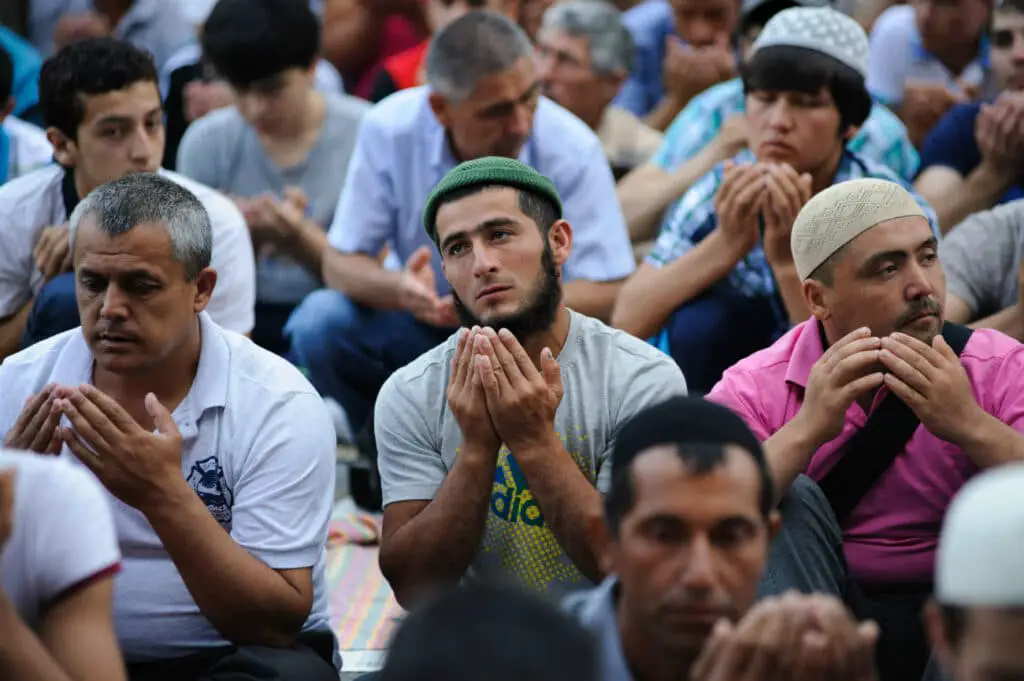
Islam is Russia’s largest minority religion with various estimates showing the number of adherants to be between 14 and 20 million. Muslims are also a growing demographic in Russia, both in terms of arriving immigrants (most from Muslim-majority states in Central Asia) and in terms of natural growth. Approximately 2 million Muslims (many of them migrant workers) are now believed to live in the Moscow area alone. Generally, Islam is not politicised in Russia (as the Orthodox and Jewish faiths are, for instance) and has been fairly well doctrinally centralized under the leadership of the moderate Council of Muftis (see below).
a. History and News
Islam.ru is an “independent information portal” with news and original interviews and articles.
Musulmanka is a lifestyle magazine aimed specifically at Russian-speaking female Muslims.
Islam in the Russian Federation is an open-source report on the demographics of Islam in Russia as of 2006 with analysis of its possible political consequences.
b. Related Organizations and Institutions
The Council of Muftis of Russia is the head of the Russia’s Islamic faith. Their website lists biography information for all leaders, as well as a director of all “Clerical Administrations for Muslims of European Russia,” which function as local governing and administrative boards. The council is also in charge of education policy and runs the Moscow Islamic University. The council is headed by Grand Mufti Sheikh Ravil Gainutdin.
Central Spiritual Board of Russian Muslims is a centralized and independent structure with branches in Russia, Belarus, Moldova, and Latvia.
Religious Board of Muslims in the Nizhniy Novgorod Region unites 57 member mosques to preserve Islamic culture and educate the public about Islam. There are similar boards in Perm and Tatarstan with official websites offering information about Islam in those regions.
The Unified Muslim Hotline is a service and site in Moscow where muslims can have nearly any muslim-related question answered for free.
Organization of the Islamic Conference is an international organization formed to advance and safeguard the interests and well-being of Muslims world-wide. Russia was recently granted observer status in the organization.
4. Staroveri (Old Believers)
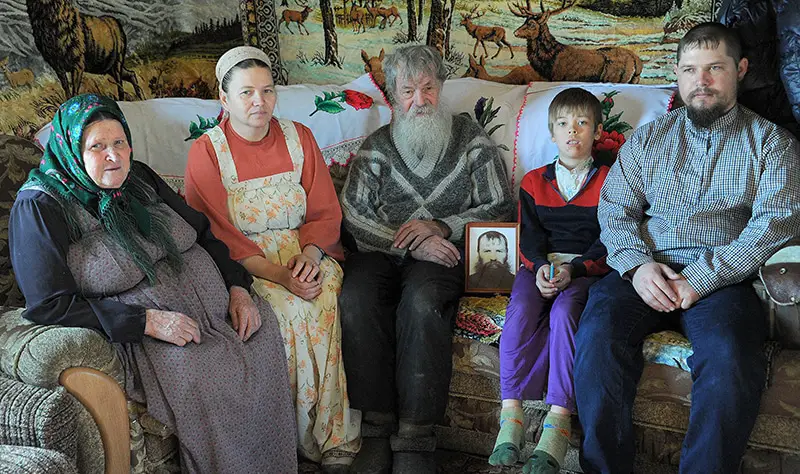
Staroveri (Old Believers), due to a reclusivity which protects their pre-15th-century Orthodox beliefs, are difficult to count. Worldwide membership is estimated at 5.5 million with about 400,000 living in Russia according to the 2012 Russian census. Most members of the faith migrated out of Russia because of persecution during the tsarist and soviet eras. Some Old Believers, however living abroad are starting to migrate back to Russia and some are accepting Russian citizenship via an expidited process offered by the Russian government.
a. History and News
Paul Wigowsky compiled a history focusing specifically on a group of Old Believers who settled in Oregon, but also offers lots of information on the general history and culture of the religion.
The Library of Congress offers a short text on the religious flight of the Old Believers. The text is a bit dense, but the picture galleries are worth note.
StaroObrad.ru offers a very attractive and well-organized site with news, publications, and links.
Religare.ru, a project to educate Russian journalists about religious topics, offers lots of information on Old Believers, including official documents, news, and links.
Oldbelief.chat.ru offers a small online library of Old Believer texts.
Wikipedia and Orthodox Wiki offer informative, if perhaps slanted and clumsily written accounts of the Old Believers.
b. Related Organizations and Institutions
The Office of the Metropolitan of Moscow is the generally recognized head of the Old Believer church. Its current head is Metropolitan Kornilli.
Old Believers in Kirov have their own website and even an active group on VK.
Churches in Ostozhenka, and the Baikal Regions also have endorsed websites. St. Petersburg has an unofficial site.
c. Other Sites of Interest
The Russian-Lipovan Community in Romania offers a short history in English of how they came to live in Romania.
Old Believer communities in Estonia and Latvia also have sites.
The Canadian Encyclopedia, offers a brief history and description of the Old Believers of Canada.
5. Buddhism
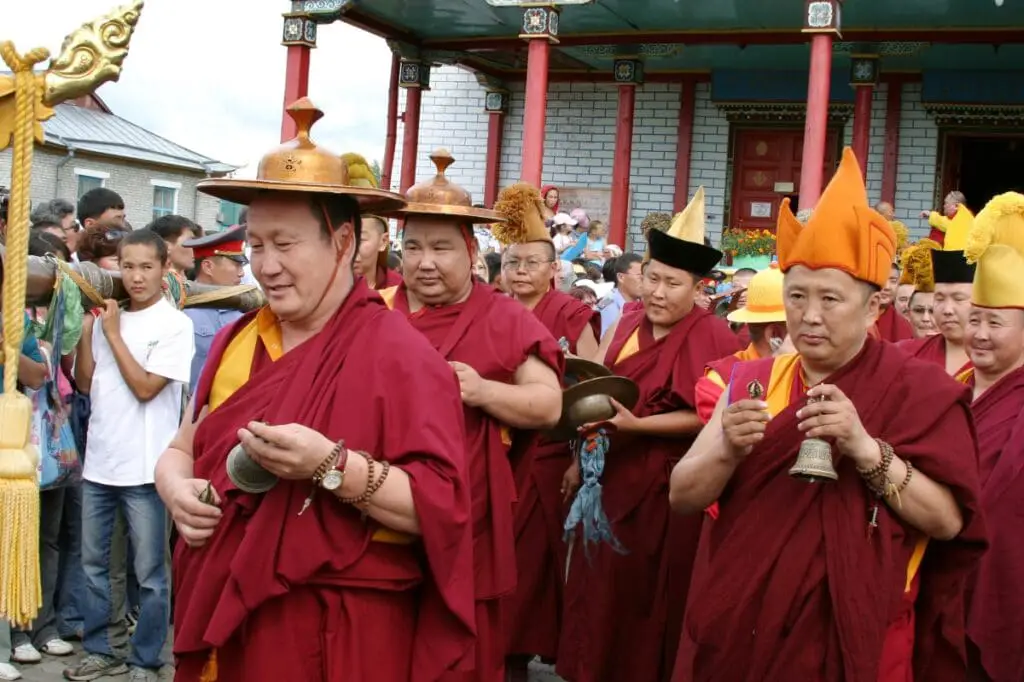
Buddhism has been native in Russia since about the 16th Century. Russia is home to many large Buddhist temples, particularly in Buryatia, Kalmykia, and Tuva (all in southern Russia). Estimates place the number of Buddhists in Russia between 700,000 (.5% of the total population) and 2 million (1.4%).
a. News and Information
News.ru has a Russian language news monitoring service for world Buddhism.
Buddhist.ru gives an extensive history of Buddhism in Russia and other resources. See also the Russian-language forum.
BuddhismOfRussia.ru offers several Russian-language publications and a news service.
The Datsan in St. Petersburg has its own site, as well as the site focusing on local news.
Wikipedia has an extensive and informative entry for Buddhism in Russia.
Buddhist Painting of Buryatia offers lots of illustrations. See the Russian site for more info.
b. Related Organizations
The Russian Association of Karma Kagyu School Buddhists is one of the largest Buddhist associations in Russia. For more extensive information, see the Russian version of their site. This school of Buddhism is led by Ole Nydahl, a Dane.
The Datsun at Ivolginskogo, located in Southern Russia near Lake Baikal, is one of Buddhism’s major centers in Russia.
Tamqui.com provides a brief history and description of one of the biggest Russian buddhist communities – Kalmykian.
Mantra.ru is the official site of Moscow’s large Buddhist Center.
The Buddhist Center in St. Petersburg also has an official site.
6. Protestants and Catholics
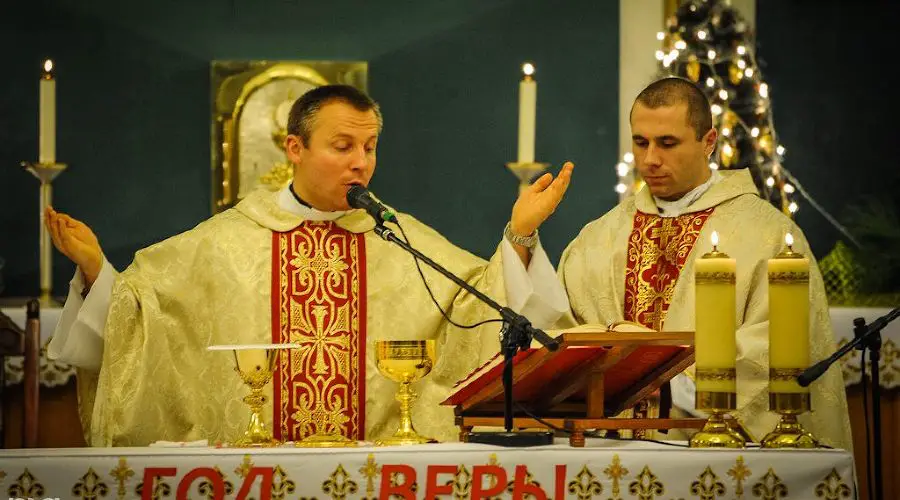
The Catholic Church estimated that there were from 600,000 to 1.5 million Catholics in Russia in 2006, which would amount to 0.5% to 1% of Russia’s population. According to the Slavic Center for Law and Justice, Protestants number more than 2 million (1.4% of the population), spread over more than 3,500 registered religious organizations.
a. News and Information
BibleLamp.ru is a news, information, and Christian dating service in Russian.
Protestant.ru offers non-denominational protestant-centered religious news and articles in Russian with search functions by Russian regions and a subscription service.
b. Related Organizations
BibleLamp.ru offers a massive database of Christian Churches in Russia, Ukraine, and other Russian-speaking countries.
Slavic Gospel Association is an organization assisting evangelical Christians and specifically Baptists in Russia, Ukraine, and Belarus.
Russian Union of Evangelical Christian-Baptists offers a Christian news service in English and general information on evangelical movements in Russia (check to see if can opened in a different browser/was moved to another domain).
Рускатолик.рф has an extensive database on the history and traditions of the Catholic Church (in Russian).
The Anglican Church has chaplaincy in Moscow.
The LDS Church maintains a Russian language site. According the church’s own estimates, as of 2009, 19,946 members across Russia. Missions have also been established in Kazakhstan, Moldova, Belarus, and Ukraine (website in Ukrainian).
Moscow Protestant Chaplaincy serves several protestant groups in Moscow including Baptists, Presbyterians, Lutherans, and Methodists.
The Salvation Army has ministries in Russia and also in Ukraine, Georgia, and Moldova.
International Christian Fellowship is one of many non-denominational churches that meets in Moscow.
Seventh Day Adventist and the Seventh Day Adventist, Reform Movement have representation and sites in Russia.
7. Judaism
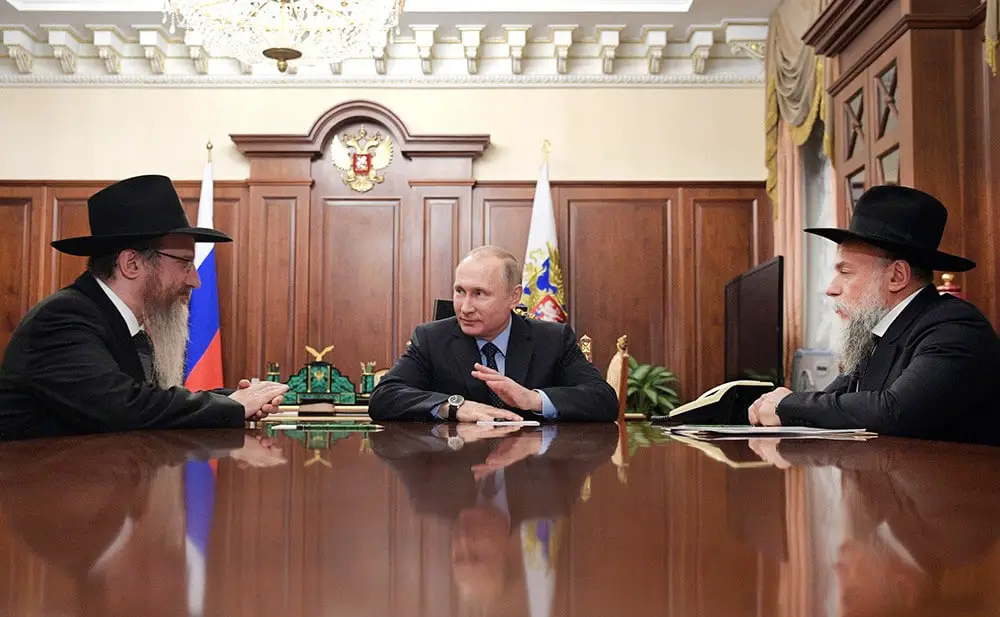
The Jewish population of Russia is estimated at under 200,000. The general assumption is that the population is shrinking due to “marrying out” (marrying outside the faith) and emigration driven by antisemitism and greater economic opportunity for educated people outside Russia. Although they are a small segment of the population, the Jewish community in Russia and the FSU are very active – shown by their prolific organizations and websites.
a. History and News
Jewish.ru offers news and analysis in Russian for the global Jewish community.
JewishVirtualLibrary.org offers a very concise history of Judaism in Russia, from its introduction to modern times.
Wikipedia offers a much more detailed account, with several pictures and off-site links.
The Jewish Society of St. Petersburg has a site focusing on local news.
The Jewish Digital Library offers an extensive collection of links to Russian-language Jewish newspapers and literature.
Jewish People Policy Planning Institute produces an annual report on the population and status of Jewish people around the globe.
b. Related Organizations and Institutions
Federation of Russian Jewish Communities (FEOR) has representative communities across Russia and is primarily concerned with helping to support Jewish culture in Russia by founding synagogues, schools, charities, and publications. The FEOR is recognized both as the main organization unifying Jewish groups in Russia and as a very conservative religious organization. Its current head is Rabbi Berel Lazar.
The Marina Roscha Synagogue and Jewish Community Center is headed by Rabbi Berel Lazar and is recognized as the official center for Jewish life in Russia. It contains a concert hall, video club, kosher cafes, a library, a conference hall, a soup kitchen and more.
Bronnaya Synagogue is another of Moscow’s major synagogues. It was reconstructed after years of neglect under Soviet rule.
The Federation of Jewish Communities of the CIS (FJC) is attempting to restore Jewish life, culture, and religion throughout the lands of the former Soviet Union by providing professional assistance, educational support, and funding to member communities.
The Russian Jewish Youth Conference seeks to unite all Jewish youth within Russia, to build relationships between them, provide social support for them, as well as to popularize Jewish lifestyles, art, culture, family values.
The Euro-Asian Jewish Conference is part of the World Jewish Congress and works to defend the rights and interests of Jewish people within the Eurasian geographic area. Its website offers press monitoring and an online magazine.
World Forum of Russian(-Speaking) Jewry is a non-governmental umbrella organization aimed to unite and represent the interests of the Russian speaking Jewry worldwide.
NCSEJ is an American organization that works to protect the rights and freedoms of Jewish people in Eurasia.
The Choral Synagogue used to be St. Petersburg’s only synagogue up until 2015, when the Minor Synagogue was renovated and officially opened next to it. The adjoining “Beit Khabad” Community Center contains a restaurant, library, and other services.
c. Other Links of Interest
An Anthology of Jewish-Russian Literature: Two Centuries of Dual Identity in Prose and Poetry offers extensive selections of literature that help reveal Russian-Jewish identity.
Need kosher in Russia? Our Guide to Jewish Moscow and St. Petersburg City Guide now lists eateries serving kosher food!
8. Shamanism, Paganism and Traditional Belief
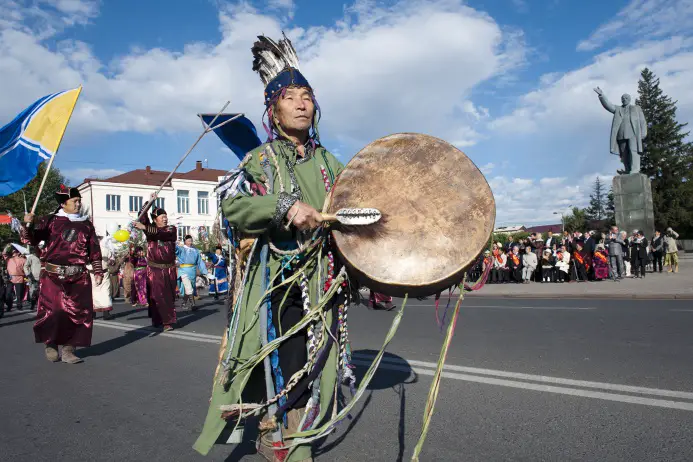
Childern of the Arctic is a website devoted to the peoples of the Russian Far East and Arctic regions.
News.ru offers news monitoring in Russian for Paganism and Shamanism.
Northern Shamanism is a web community for shamanists. It’s flooded with detailed information in Russian about the religion.
The Evenk Cultural Center is devoted to the culture of the Evenk.
BuryatMongol.org offers a wealth of English-language information about shamanistic myths and ceremonies.
Pagan.ru offers lots of information in Russian, including a massive “Dictionary” of Russian Paganism with information and pictures of Russia’s ancient gods and a large library of pagan documents and material.
Russian Folklore lists various Russian folk tales, songs, spells and riddles.
b. Related Organizations, Names, and Sites
There are 14 registered organizations uniting Shamanists. Some of the largest are “Боо мургэл,” “Лусад,” and “Тэнгэри.” Unfortunately, none of these have websites. Shamanists also do not have standard churches, but use holy sites and homes to conduct services. There are 8 official pagan organizations. Most of those also do not have websites.
This article from Baikal Land details several holy sites with pictures.
Article: Maslenitsa, Blin! (pagan tradition still popularly celebrated in Russia)
9. Atheism and Agnosticism

As these are often not considered religions, there are few reliable statistics for the number of atheists and agnostics in Russia. According to a 2012 poll, for instance, 13% of the Russian population claimed to be atheists. Another survey, performed by Levada center around the same time, suggests that 5% of Russians are atheists and about 10% do not consider themselves believers of any religion.
The Atheists of Russia are an organized group representing the interests of Russian atheists in Russian society and promoting scientific thought.
Atheism.ru is the most extensive website available covering atheism in Russia. It also offers this “Report from Russia” about the perceptions of a Western atheist in Russia during the 90s. Hasn’t been updated since 2015.
Ateism.ru and The Council of the Runet’s Atheists are also considerably big and have their news, articles and even humor on the topic.
Russian Skeptics Club offers some information on agnosticism and atheism in Russia.
10. Interreligious Organizations and Religious Tolerance
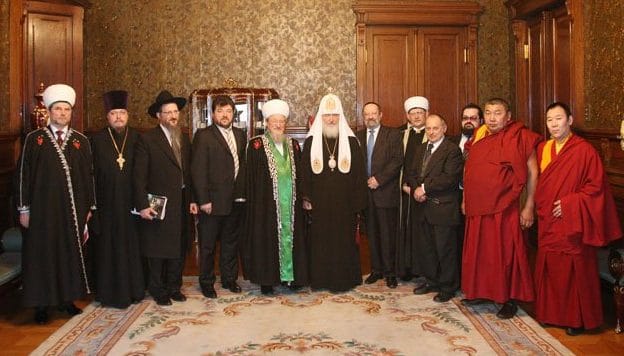
The Interreligious Council of Russia drew leaders of Russia’s largest denominations as well as international religious leaders together to work for “interreligious peace.”
Forum18 advocates tolerance around the world, including the FSU.
The US State Department issues yearly reports on Religious Freedom around the world. Note that these reports often have liberally calculated statistics and concentrate on issues of religious intolerance reported in these countries.

